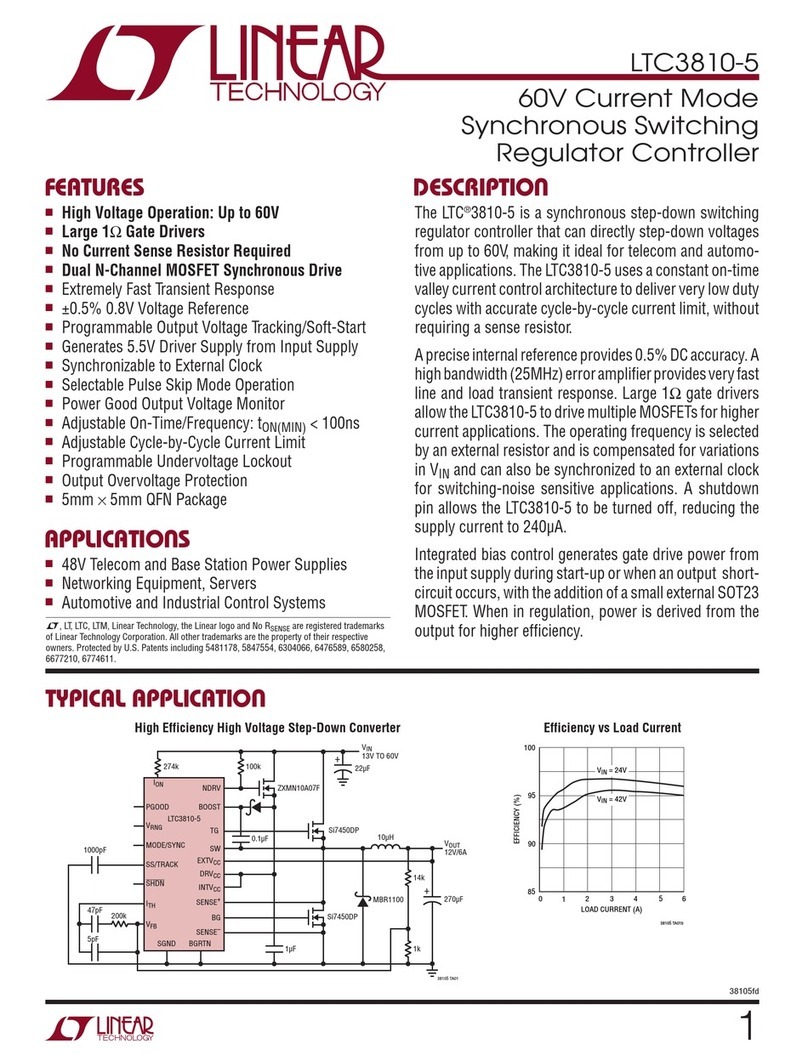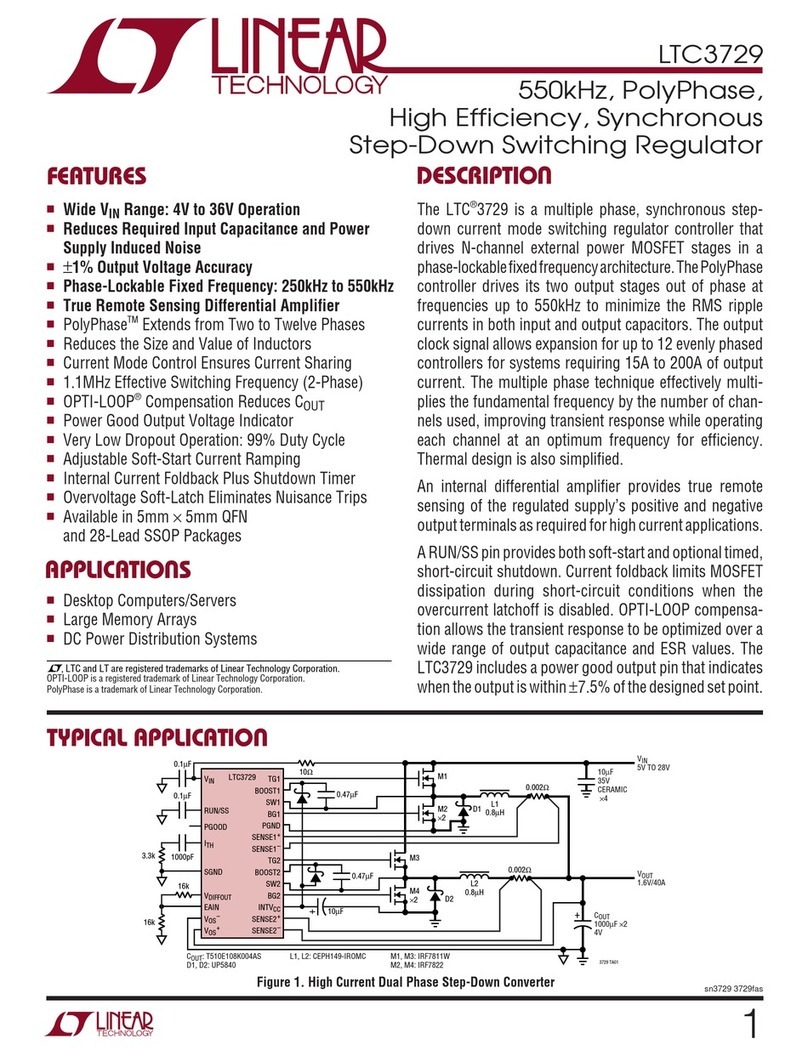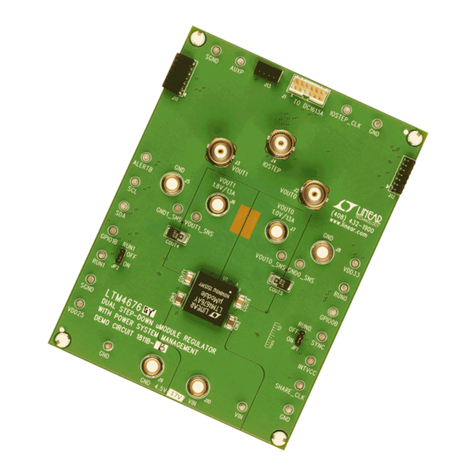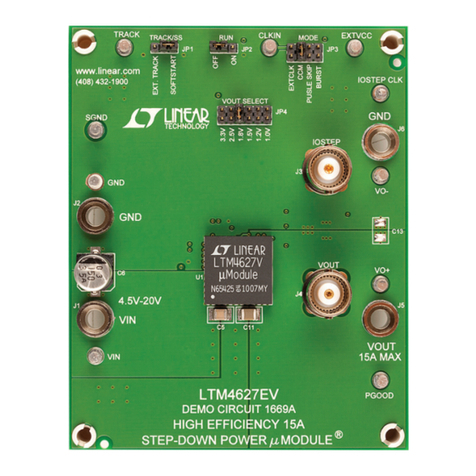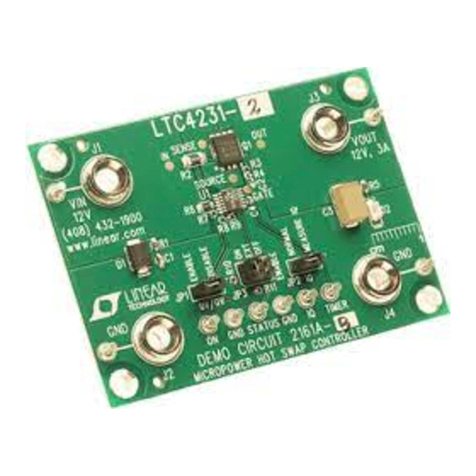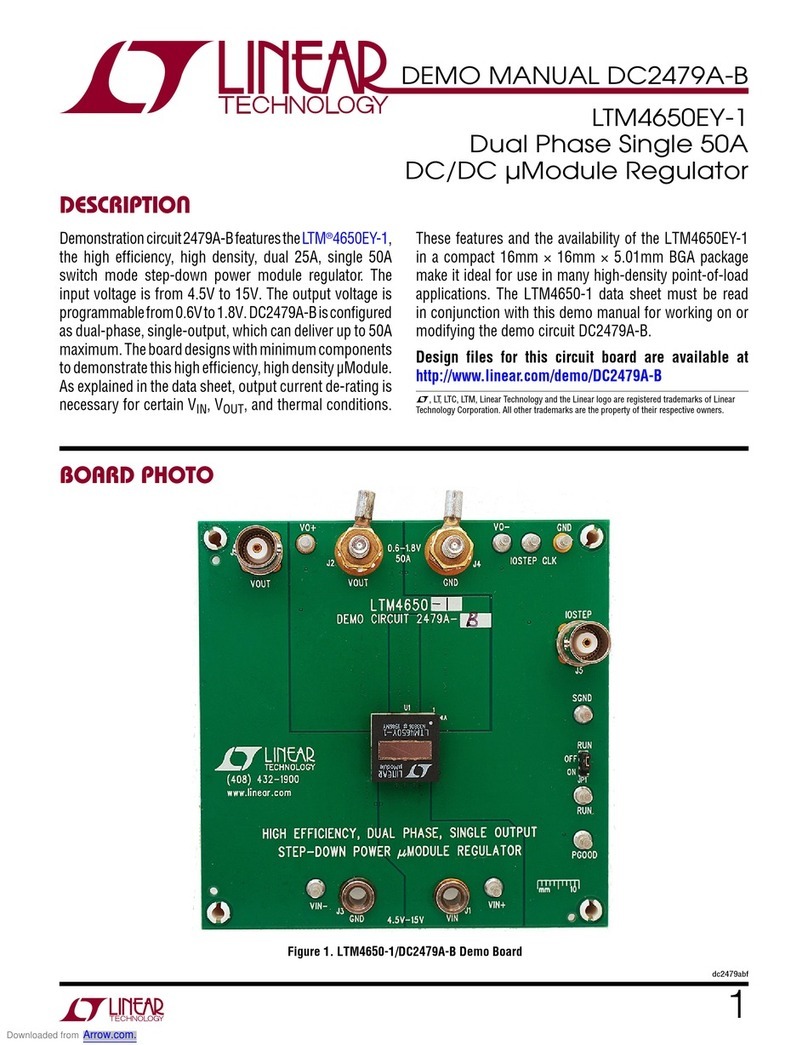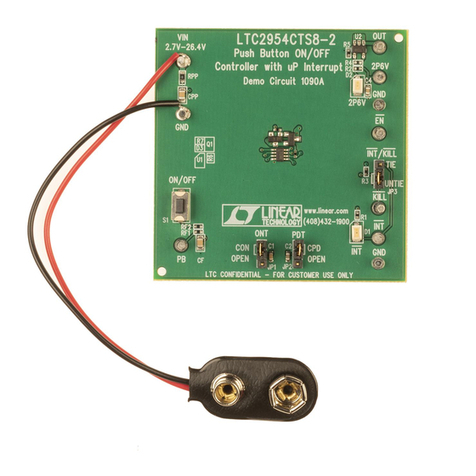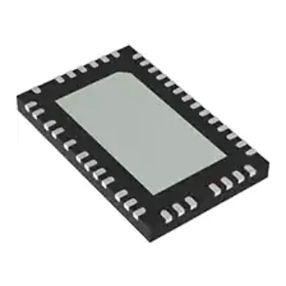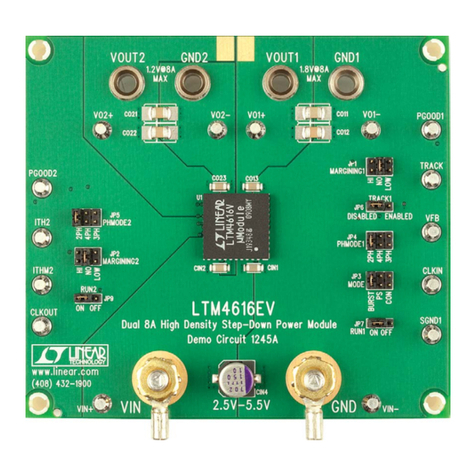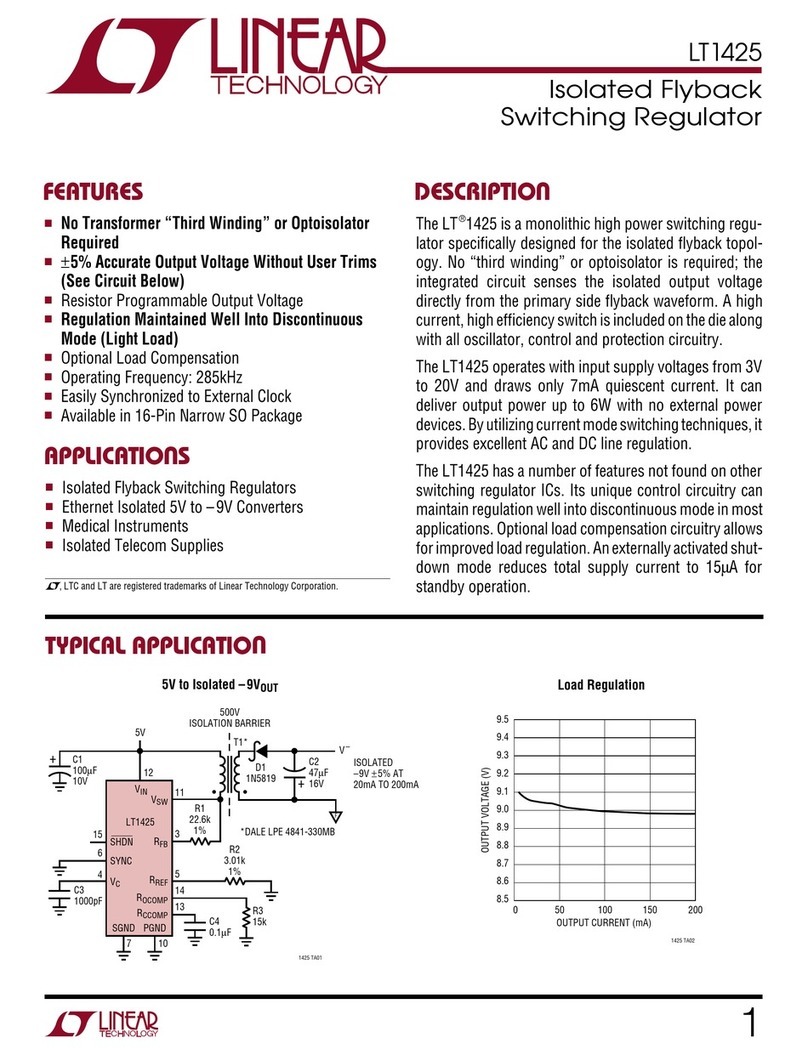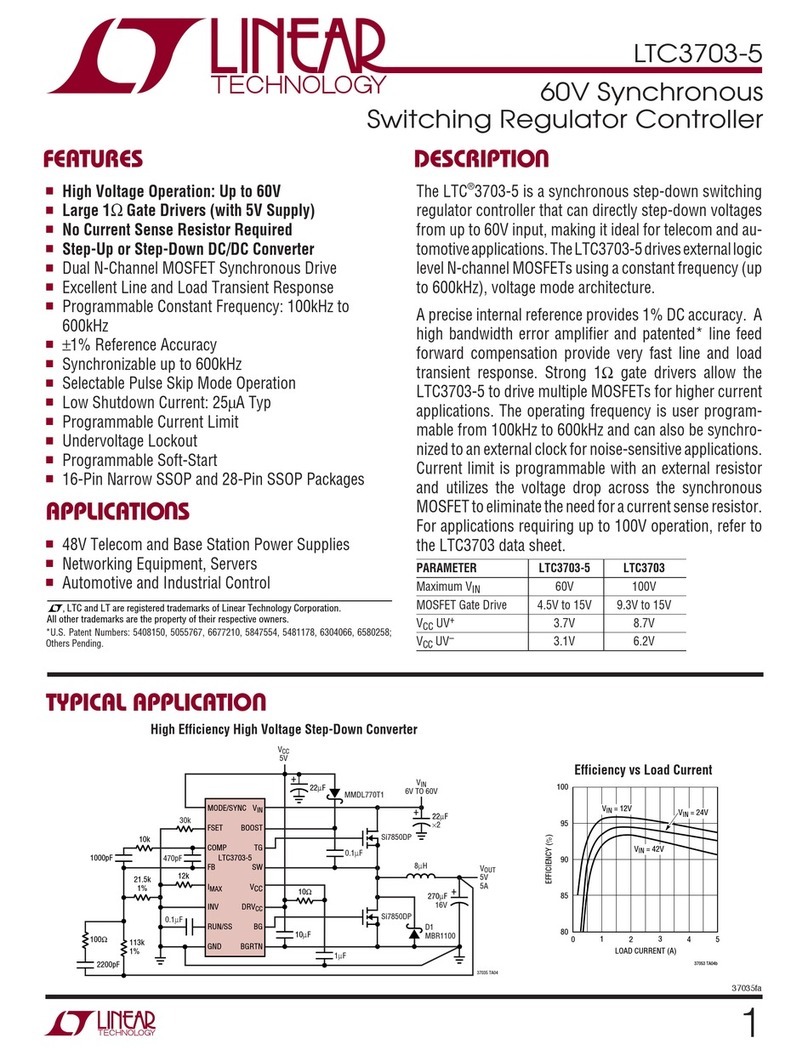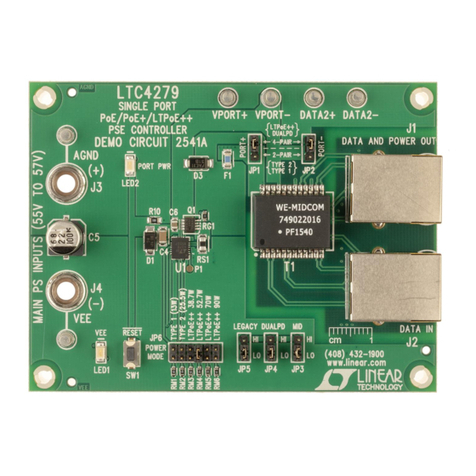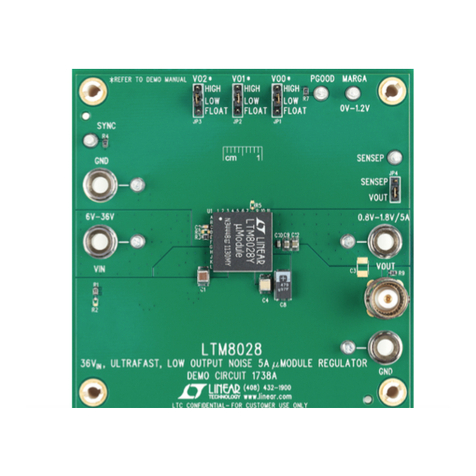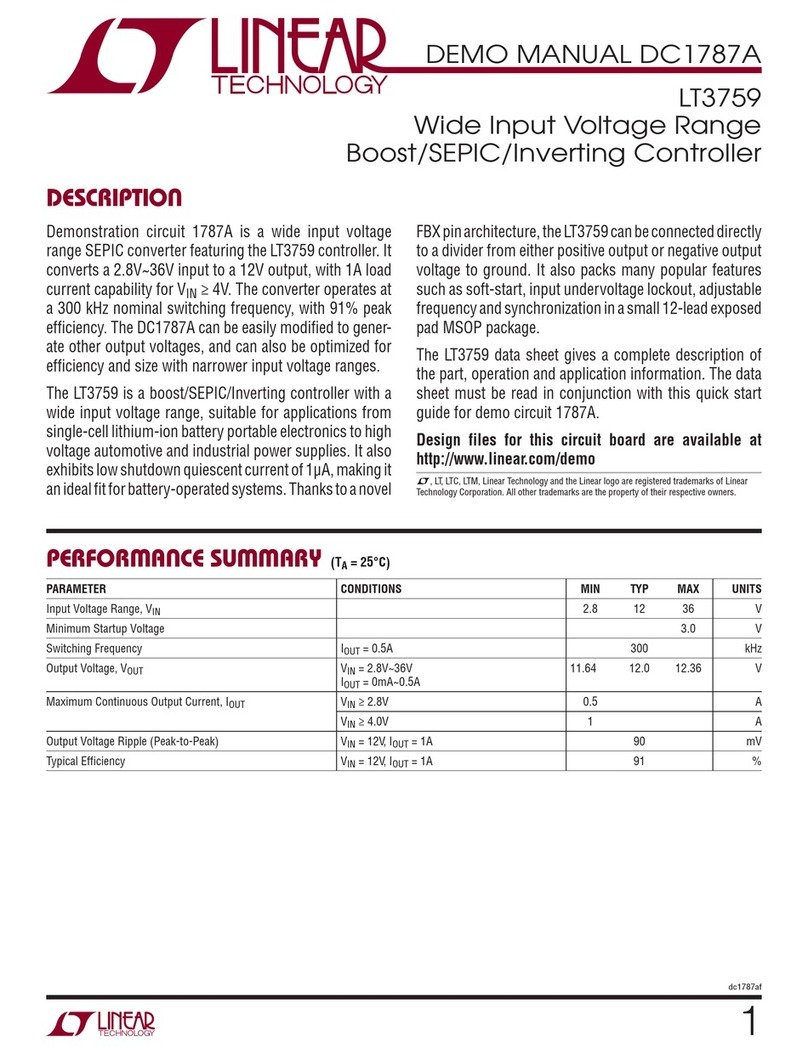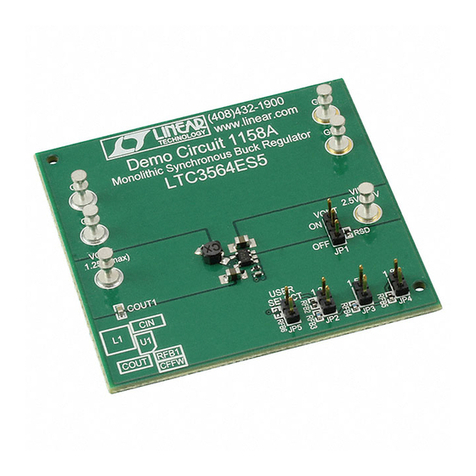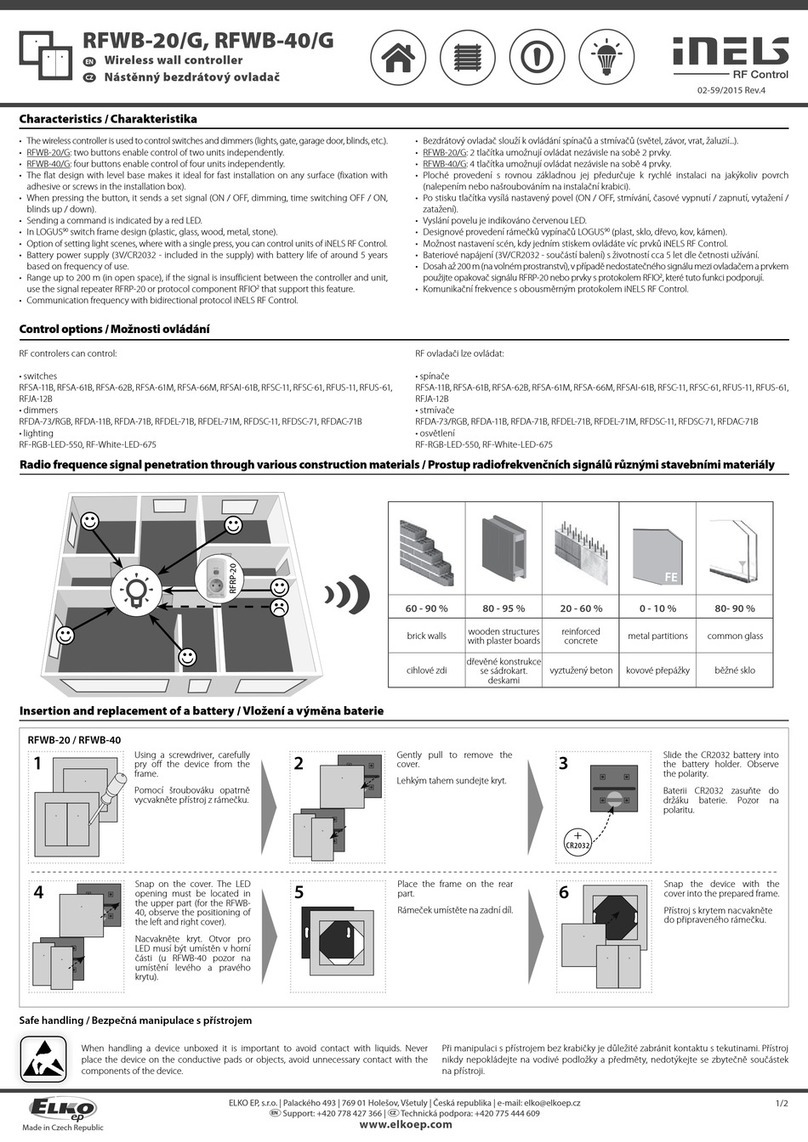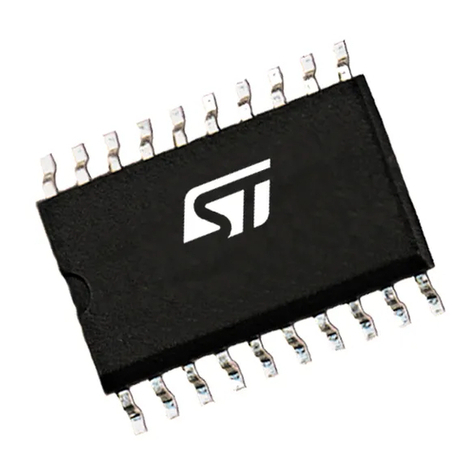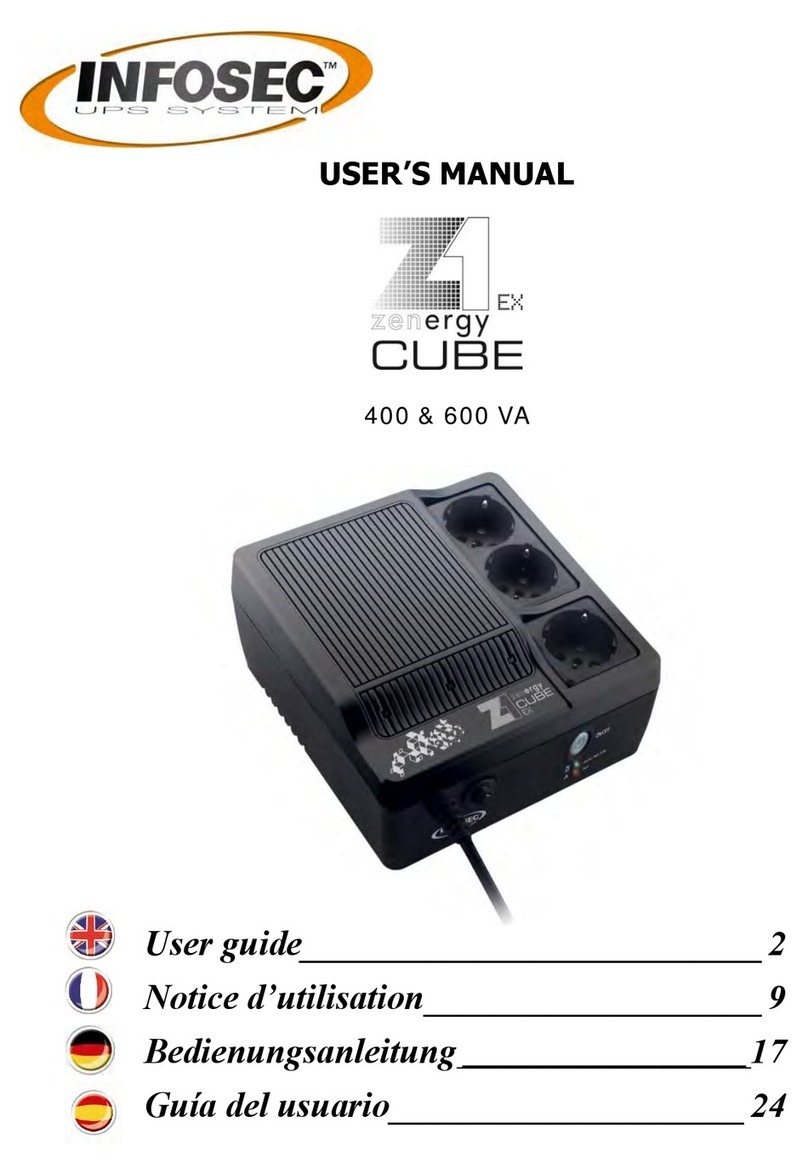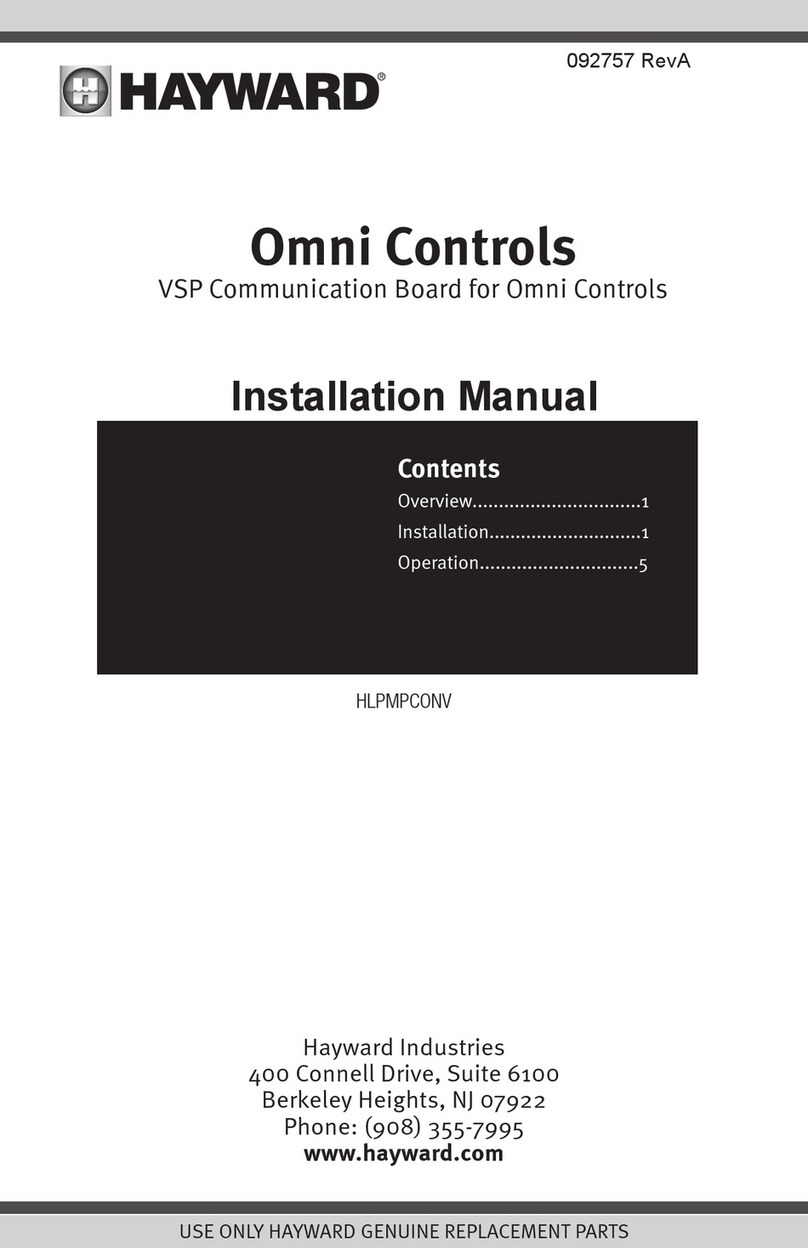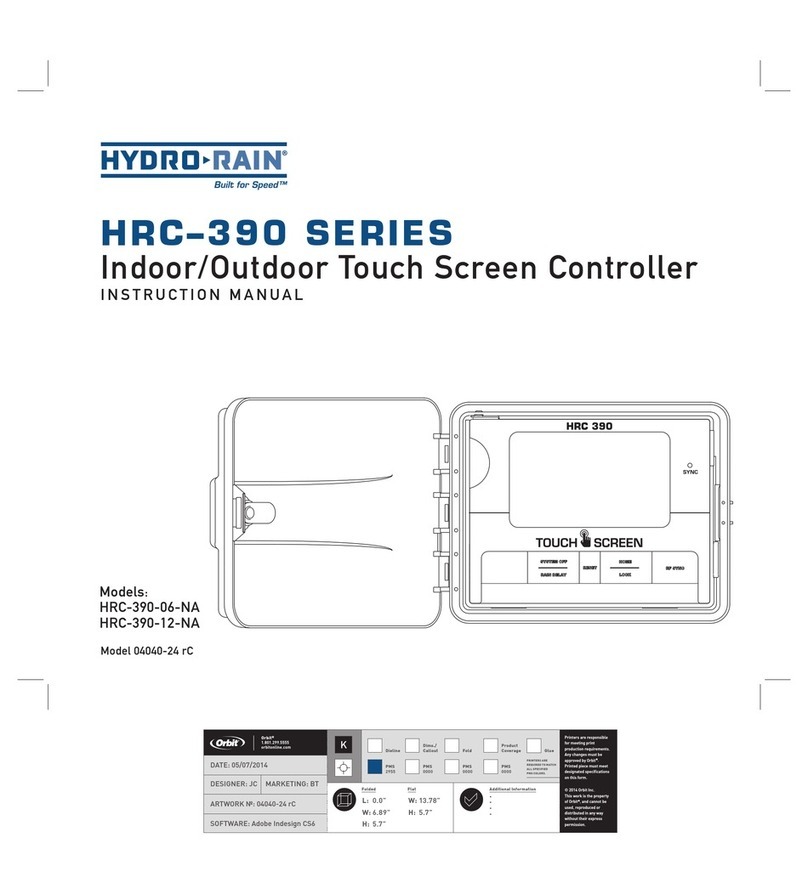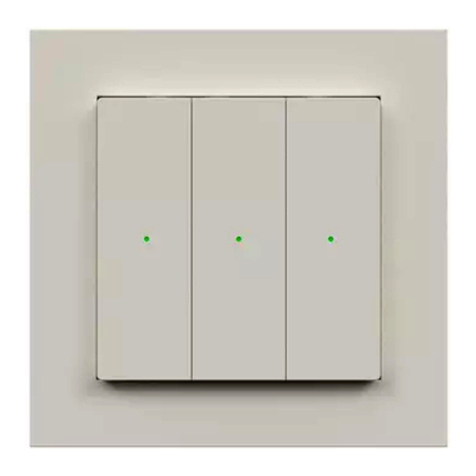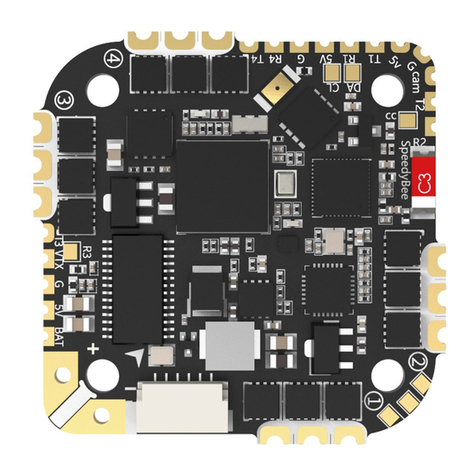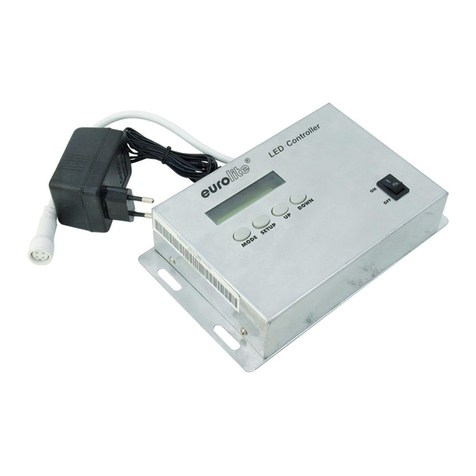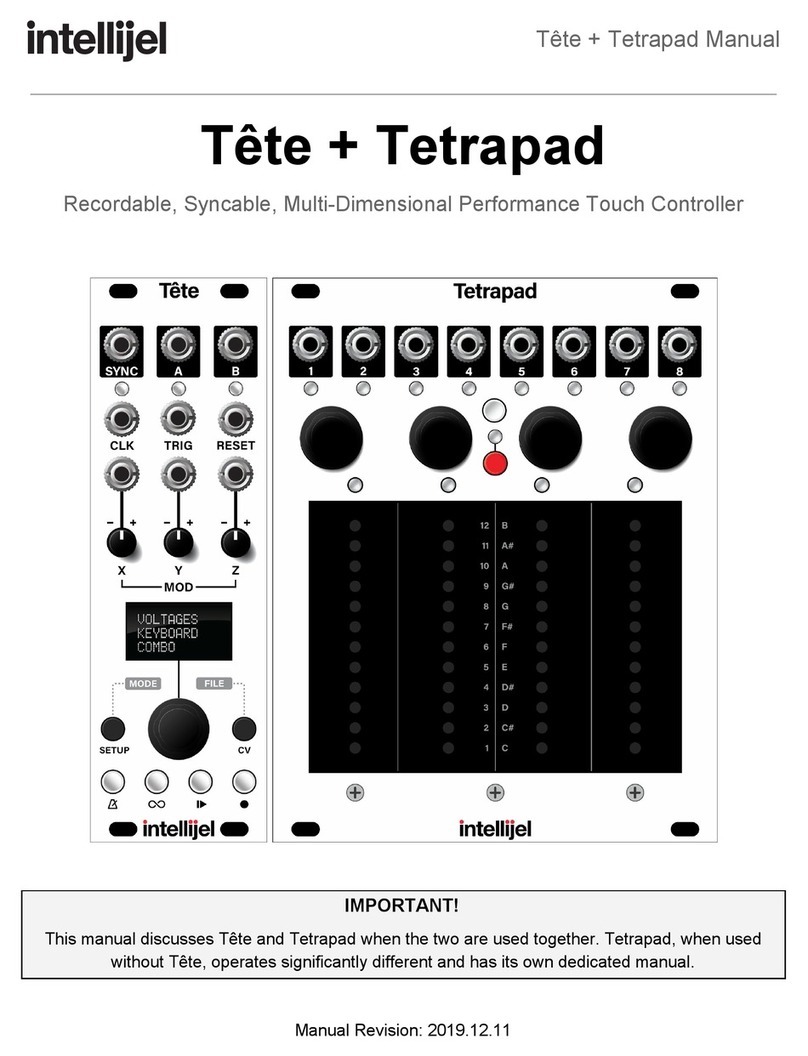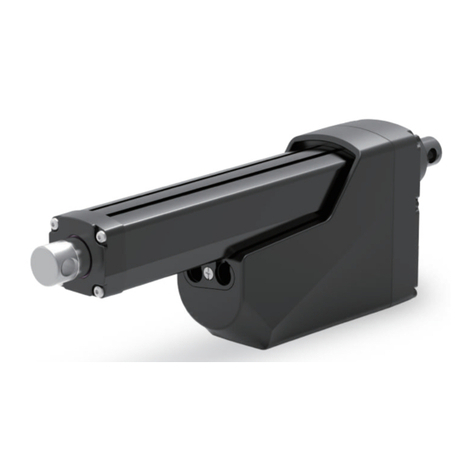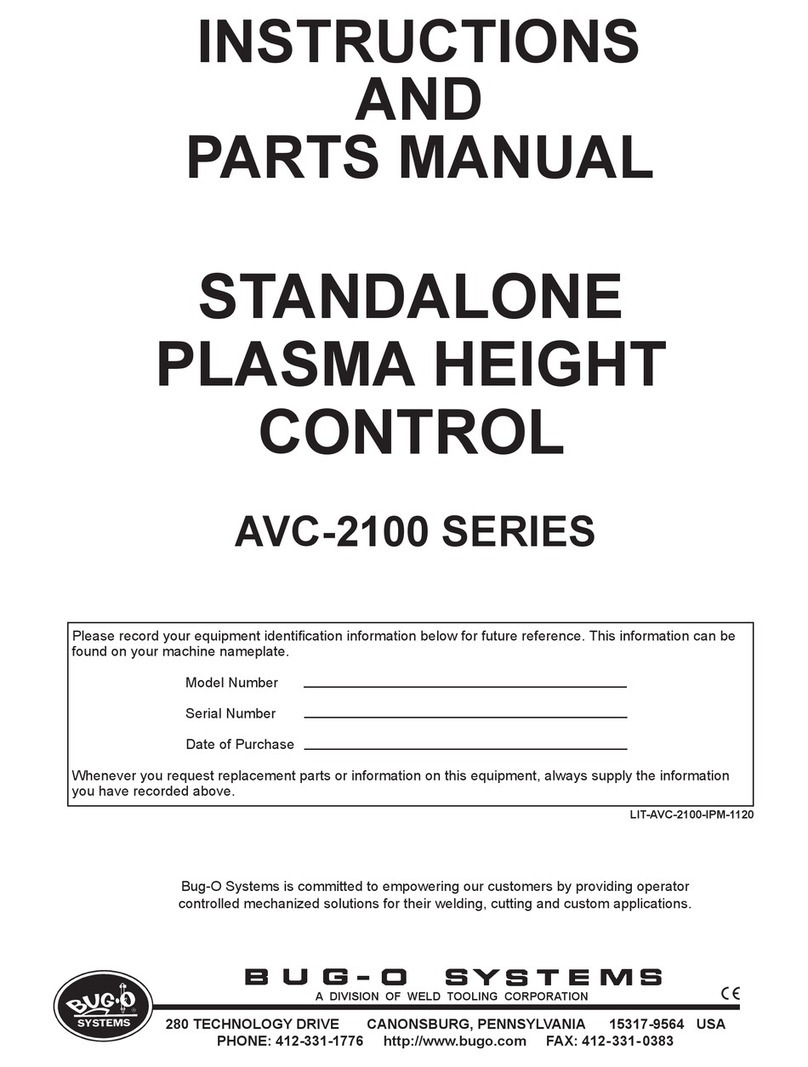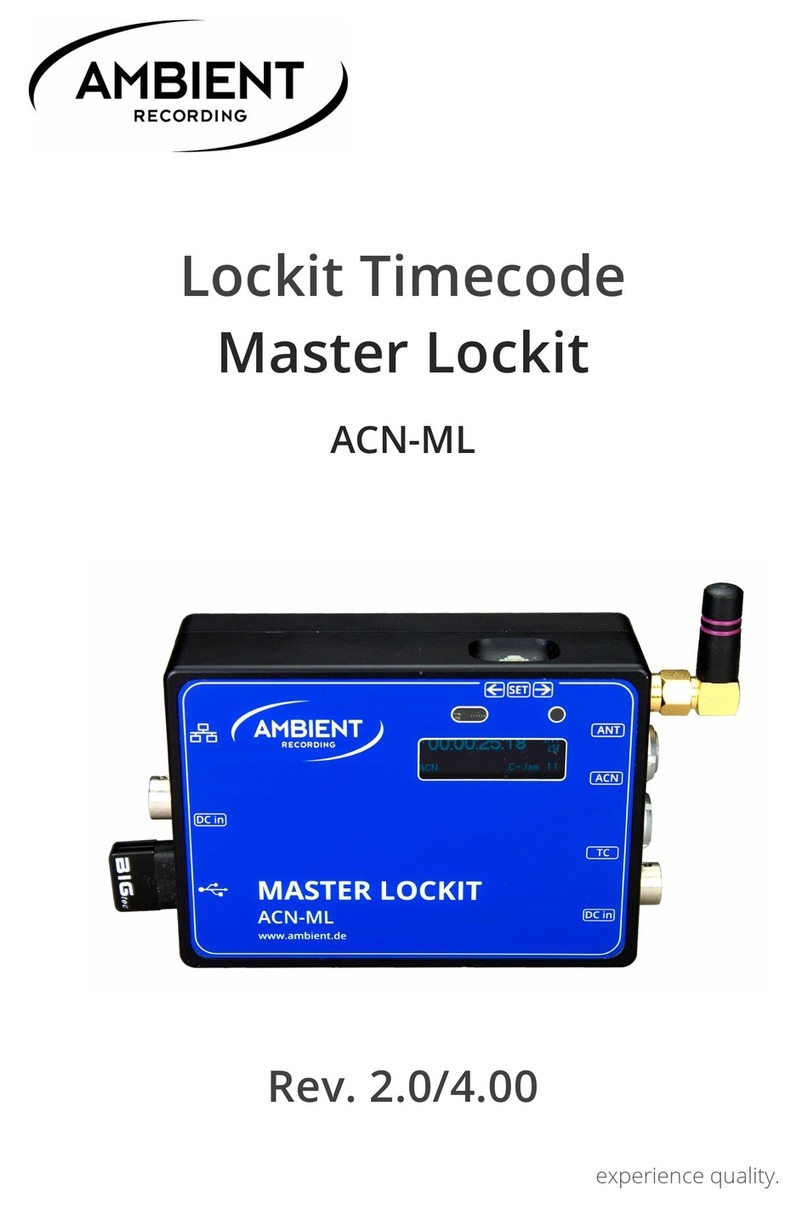
QUICK START GUIDE FOR DEMONSTRATION CIRCUIT 1215
5A, 15V, MONOLITHIC SYNCHRONOUS STEP-DOWN REGULATOR
2
QUICK START PROCEDUR
QUICK START PROCEDURQUICK START PROCEDUR
QUICK START PROCEDURE
EE
E
Demonstration Circuit 1215 is easy to set up to evalu-
ate the performance of the LTC3605. For proper
measurement equipment configuration, set up the
circuit according to the diagram in Figure 1
Figure 1Figure 1
Figure 1. Before
proceeding to test, insert shunts into the OFF position
of the RUN header JP7, the forced continuous mode
position (FCM) of the MODE header JP6, the 2 phase
position of the PHMODE header JP5, and the 3.3V
output voltage header, JP2.
When measuring the input or output voltage ripple,
care must be taken to avoid a long ground lead on the
oscilloscope probe. Measure the input or output volt-
age ripple by touching the probe tip directly across
the Vin or Vout and GND terminals. See Figure 2
Figure 2Figure 2
Figure 2 for
proper scope probe measurement technique.
With the DC1215 set up according to the proper
measurement configuration and equipment in Figure
FigureFigure
Figure
1
11
1, apply 6.3V at Vin (Do not hot-plug Vin or increase
Vin over the rated maximum supply voltage of 15V, or
the part may be damaged.). Measure Vout; it should
read 0V. Turn on the circuit by inserting the shunt in
header JP7 into the ON position. The output voltage
should be regulating. Measure Vout - it should
measure 2.5V +/- 2% (2.45V to 2.55V).
Vary the input voltage from 4V to 15V and adjust the
load current from 0 to 5A. Vout should read 2.5V +/-
4% (2.4V to 2.6V).
Adjust the output current to 5A. Measure the output
ripple voltage; it will measure less than 40 mVAC.
Observe the voltage waveform at the switch node
(pins 16 thru 19). Verify the switching frequency is
between 800 kHz and 1.2 MHz (T = 1.25 us and 0.833
us), and that the switch node waveform is rectangular
in shape.
Change the JP6 shunt from forced continuous mode
to discontinuous mode (DCM). Also set the input
voltage to 12V and the output current to any current
less than 1.5A. Observe the discontinuous mode of
operation at the switch node, and measure the output
ripple voltage. It should measure less than 150 mV.
Insert the JP7 shunt into the OFF position and move
the shunt in the 2.5V output JP1 header into any of
the two remaining output voltage option headers:
3.3V (JP2) or 5V (JP3). Just as in the 2.5V Vout test,
the output voltage should read Vout +/- 2% tolerance
under static line and load conditions and +/- 1% tol-
erance under dynamic line and load conditions (+/-
2% total). Also, the circuit operation in discontinu-
ous mode will be the same.
When finished, turn off the circuit by inserting the
shunt in header JP7 into the OFF position.
Low Output Voltage Configuration
For applications with output voltages less than 2V, the
inductor value of 1 uH on the DC1215 should be
changed to 0.33 uH. This is required so that the in-
ductor ripple current ramp has a large enough slope
for the current comparator can distinguish it from
noise voltages.

